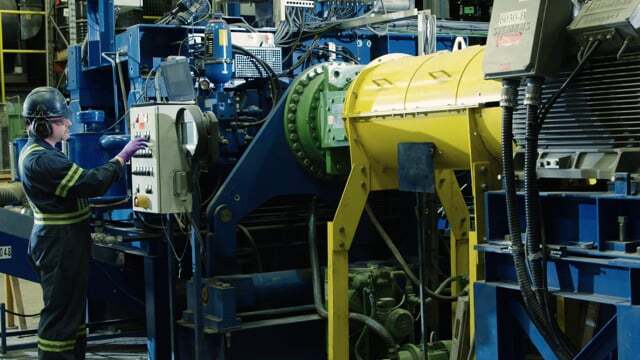Corem demonstrates energy savings from replacing ball milling with HPGR


Suppose you could replace the wet ball milling circuit with other proven, available equipment and reduce energy consumption by over half. That is over half from the recognized most inefficient, biggest energy consumption step by far in the entire mining business. Ball milling is responsible for approximately 5% of the total cost of metal production, and 1% of the world's total energy usage and carbon emissions.
Corem, a Québec-based consortium of mining companies which pool together their research and development resources, has done exactly that. Aided by a Natural Resources Canada "Crush It! Mining Challenge" investment, the Corem comminution team partnered with the University of British Columbia, two mining companies, six equipment manufacturers and numerous grinding experts to develop and demonstrate "Replacement of Wet Ball Milling with High-Pressure Grinding Ahead of Mineral Separation". Their story is being presented at 2022 industry technical conferences, SME in Salt Lake City and CIM in Vancouver.
Plant data and samples needed for pilot plant testing were collected from two milling operations, a small gold ore processor and a large tonnage copper ore processor. Following extensive planning and preliminary equipment testing, pilot circuits using high-pressure grinding rolls, closed circuited with sizing screens, were run in batch-locked cycle style to steady state conditions. Moisture level to the grinding rolls was controlled to that found achievable with high-capacity filtering by solids and water blending.
Some of the major findings from the study were as follows.
With the higher cost of the HPGR circuit equipment, preliminary economics were shown to be most favourable where energy costs are highest. However, this initial study clearly demonstrated the technical feasibility of the novel flow sheet to simply replace an existing circuit. Extensive optimization around classification and dewatering equipment, and the preceding steps of the comminution flow sheet, place it squarely on the "must evaluate" list for today's expansions and new projects.
More information is available at www.corem.qc.ca.
Comments
Howard Lord
What’s old is new again. HPGR technology has been used for over thirty years now to reduce milling costs for certain minerals and cement clinker. Hundreds of studies and tests have confirmed this. HPGR suppliers know when and when not to include this technology in a specific flow sheet.